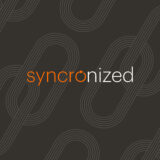Patch management is an essential function for any MSP. But it can be difficult to manually monitor vendor patch releases and update software or devices across a broad client portfolio. That’s why automated patch deployment and patch management tools are so important.
In this post, we’ll talk about what to look for in patch management software and share the nine best patch management tools for MSPs looking to improve operations in 2025.
What to look for in patch management software
If you search for a “patch management solution” on G2, you’ll find 70+ products that fit the bill. When evaluating which platform is best for your MSP business, consider the following features and functionality.
Support for client operating systems
If your clients use exclusively Windows devices, you could use a patch management tool for Windows. However, if your client portfolio grows, you might also need to manage patches in macOS and Linux environments. Choose patch management software that meets your current needs but doesn’t limit your ability to work in other operating systems.
Suitability for client risk profile
As clients transition to fully remote work environments, their risk profile significantly increases. You might need to automate patch management across multiple time zones and endpoints without disrupting employee work schedules.
Look for software that streamlines remote management of the entire patch management process. Patch management solutions should be able to detect missing patches, deploy patches automatically and prioritize deployment of critical patches.
Automation
Manual patch management is inefficient, and unless you have a team member who actively looks for patch releases every day, it’s easy to miss important updates. Software that automates patch management reduces the need for real-time human oversight while enabling uniform patch management across environments.
Automating the entire patch management process ensures faster response times, enhanced security and improved productivity. With automation, you can deploy patches at times that are most convenient for end users and keep operating systems, third-party applications and critical business systems secure.
Reboot customization
If you’re applying a patch that requires a reboot, you may want the ability to schedule when the reboot occurs. Customization options in patch management software can help you force, disable, or schedule a reboot for a time when it won’t be disruptive for clients.
Analytics
Part of running a successful MSP is routinely evaluating your performance. Look for patch management software that offers auditing and reporting capabilities, so you can see how quickly you’re deploying patches, and whether your client agreements are in scope. For example, if you see that most of your billable patch management time is assigned to a specific client, you may need to increase your pricing.
Flexibility
MSPs need to minimize costs and “tech bloat,” and some patch management software doesn’t support those goals. For example, some patch management software locks MSPs into annual contracts and comes loaded with features that MSPs don’t need.
The best patch management software offers monthly and annual pricing, doesn’t require a contract and sets prices based on the number of users, not endpoints. It also includes integrations with third-party applications that you can add as needed — Splashtop, Pax8 and WooCommerce, for example.
Platform innovation
Innovation and ongoing improvement are critical for patch management software. Look for software that solicits customer feedback and uses it to optimize the patching process, improve IT ticketing management and build a product roadmap for ultimate transparency.
8 Patch Management Tools in 2025
Now let’s look at some of the best patch management solutions and tools available for 2025.
1. Syncro
All-in-one patch management for MSPs & IT professionals

Syncro is more than patch management software. It’s an all-encompassing platform for MSP teams that want to manage client work and business operations from a single interface. With PSA, RMM, remote access, IT ticketing functionality and more, MSP teams can stay organized, quickly respond to client requests and run a more profitable MSP operation.
With Syncro, you can also automate client billing, manage contracts and SLAs and communicate with clients within the application. You can also integrate Syncro with the tools your team relies on, like Office 365, Intuit Quickbooks and Slack. Syncro’s patch management features include scheduling, prioritizing and customizing patch deployment, as well as tracking progress and failures through detailed reports.
Key features:
- Unlimited PC and Mac endpoints
- Automated patch management
- Community script library
- SNMP monitoring
- Custom reports and analytics
- Knowledge base and support community
- Automated data backups
- Remote registry editor
- Remote PowerShell sessions
- Patch management policy governance
- Patch status dashboard
- Automated detection of missing patches
- Integration with Acronis to minimize security vulnerabilities
Test Drive the Best MSP Patching Software
See why MSPs choose Syncro to automate and scale patch management.

2. Applivery
Managing Android and Mac devices

Applivery is a remote device management platform that includes patch management features. With Applivery, MSPs can manage app licensing, configurations, restrictions, and policies. It also detects missing patches, runs software scans and installs software updates automatically.
This platform may be especially useful for MSPs with high-security clients, because it allows for the remote deactivation of screenshots, camera and Bluetooth. However, Applivery is missing the features MSPs need to manage client billing and contracts, and pricing is based on the number of managed endpoints.
Key features:
- Domain blocking
- In-app client support
- Kiosk mode for Android and iOS
- APIs
- Third-party application patching
3. Patch My PC
Deploying patches in Microsoft Endpoint Manager

Patch My PC is software that automates third-party updates for ConfigMgr and Intune. It offers multi-tenant management that MSPs can use to manage Intune patches across all clients. Patch My PC supports the patching process by scanning endpoints for missing patches, testing patches and deploying patches automatically or manually.
This is another platform that charges MSPs based on the number of endpoints, so it might not be scalable for a rapidly growing client base. It also doesn’t work for iOS devices.
Key features:
- Automatically close apps before applying updates
- Manual update override for third-party applications
- Compliance manager for ConfigMgr
- Knowledge base
- Feature requests
- Custom scripts for environment-specific configurations
4. BatchPatch
Windows patches and updates

BatchPatch is a tool for remote, high-volume Windows patches and updates, including service packs, feature packs, drivers, and update rollups. Integrated job queues allow MSPs to create a sequence of actions on remote hosts, enabling multiple patch and reboot cycles.
Large companies that use only Windows devices may find BatchPatch improves the efficiency of patch management. But this platform has limited use for MSPs that need IT ticketing and client management functionality.
Key features:
- Optional cached mode
- Windows update history report for all devices
- Remote processes termination
- Integrated task scheduler
- Uptime indicator
5. Automox
Automated patching for Windows, Mac and Linux systems

Automox uses AI to monitor endpoints and determine when patches are required, then automatically deploys them. Automox can remotely deploy or uninstall software patches for more than 500 third-party applications, on any device. Software patching capabilities include automated patch deployment, detection of software vulnerabilities, and custom rules for software updates.
Pricing is based on the number of endpoints, with a volume discount for more than 200 devices, and support is a separate service with three pricing tiers.
Key features:
- Cloud-native architecture
- Comprehensive reporting
- Automated vulnerability remediation
- Real-time status reports
- Plug-and-play “Worklets” for common tasks and updates
6. JetPatch
Creating emergency remediation plans

JetPatch is available as an on-premise, SaaS, or hybrid solution that lets MSPs fix zero-day vulnerability and configure emergency remediation plans. You can also use JetPatch for bulk installs of patches for Linux servers. As a patch manager, JetPatch automates the deployment of operating system and software patches, providing a centralized web interface, support for third-party applications, and comprehensive reporting capabilities.
This platform includes automated agent management features for quickly adding or removing agents, preventing privilege drift, and restricting server access.
Key features:
- Split patch execution
- Automatic remediation plan rules
- Patch compliance dashboard
- SLA reports
7. FileWave
Patching mobile devices

FileWave is a patch management tool that streamlines device management using “booster” technology. This feature serves as a buffer, reducing server load by preloading content from the server and distributing locally to end devices. If an end user accidentally disrupts this process, the correct settings are restored with the next device restart. FileWave also supports the patch management process by identifying, testing, deploying, and installing software patches efficiently.
Onboarding and training is included in the entry-level service tier, which is a big plus. But MSPs looking for a tool that also manages business operations and SLAs will find FileWave falls short.
Key features:
- End-to-end traffic encryption
- Remote wipe capabilities
- Data dashboards
- Self-service kiosks for end users
8. NinjaOne Patch Management
Windows, MacOS, and Linux patching

Formerly known as NinjaRMM, NinjaOne offers a comprehensive patch management solution to help organizations patch their Windows, macOS, and Linux systems with full automation and third-party patching to minimize vulnerabilities. MSPs can use this patch management tool to patch Windows software and servers, deploy patches automatically, and detect new security patches as they roll out.
MSPs looking for a fully featured platform that helps them with operational tasks may find NinjaOne Patch Management lacking. Unlike Syncro, NinjaOne doesn’t include an integrated billing engine, a customer communication portal, or SLA management features.
Key features:
- Preemptive approval of security patches
- Cloud-based remote monitoring
- Registry editor
- Windows server patching
Simplify patch management with Syncro
Syncro includes all the features MSPs need to manage their business and serve clients. Whether you’re managing patches across multiple clients, trying to minimize scope creep, or looking to streamline billing, Syncro can help.
With unlimited endpoints, no contracts, and no minimums, Syncro helps you scale operations with ease. Syncro is a comprehensive patch management solution, offering full automation for patching functions, robust third-party patching, and compatibility with Windows, macOS, and Linux operating systems. Try Syncro today for free — no credit card required!
Share














